- Home
- Knowledge library
- Grass measuring methods for rotational grazing
Grass measuring methods for rotational grazing
This section of the rotational grazing system series for suckler producers explores how to assess grass cover.
Measuring grass is a crucial part of rotational grazing systems as it allows for planning and allocation of grass to stock. There are many reliable ways to measure the amount of grass available in kilograms of dry matter per hectare (kg DM/ha), also known as pasture cover.
During the peak growing season it is recommended that pasture is assessed at least every 7–10 days. This will vary throughout the year and between farms. To improve consistency, use the same person to carry out measurements.
Estimates of kg DM/ha can be cross-checked by cutting and weighing grass from a known area.
Methods to assess pasture cover
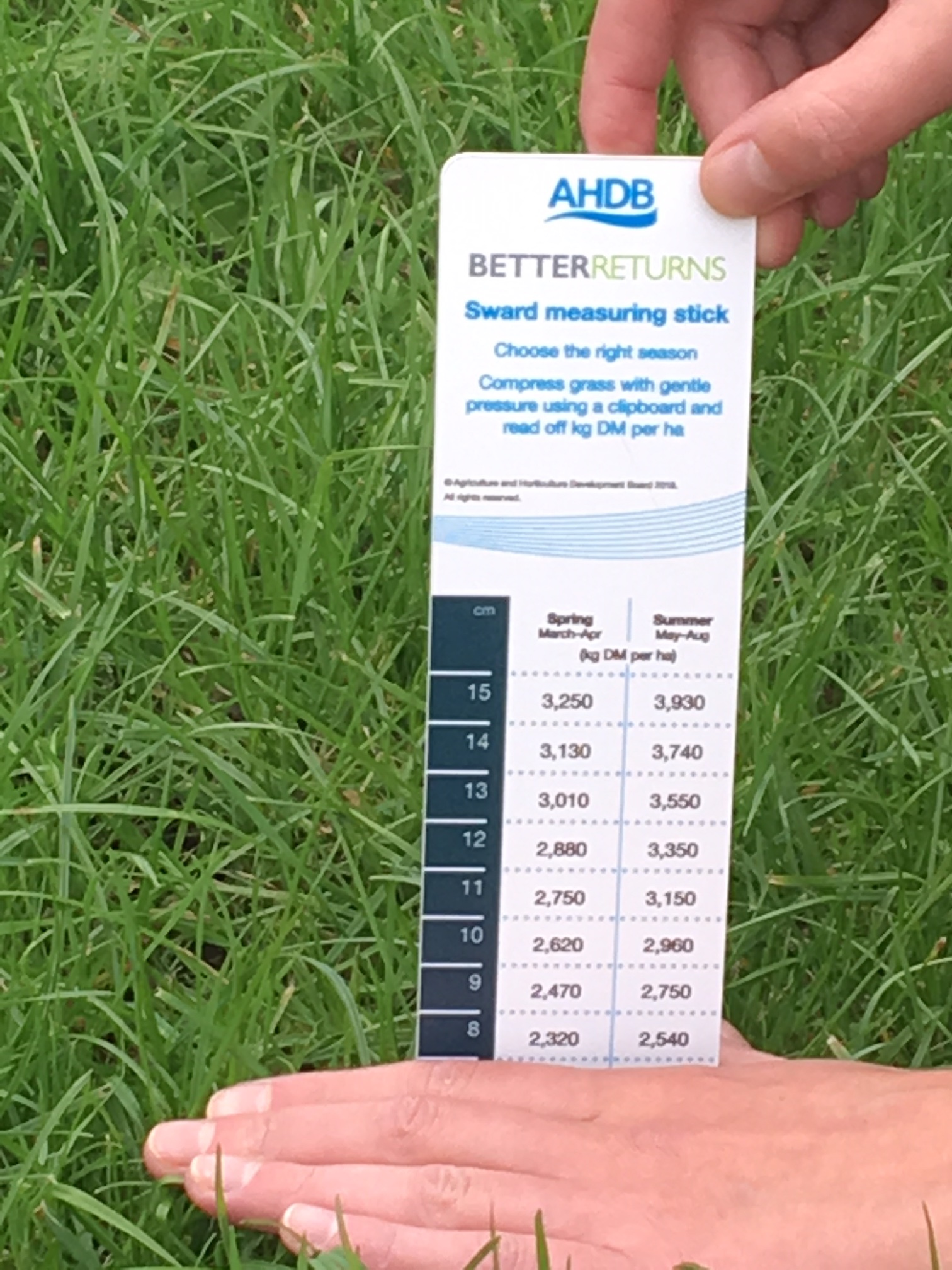
Feed budgeting requires kg DM/ha, which is calculated from sward height and sward density. A compressed sward stick is calibrated to convert sward height to kg DM/ha.
Sward density is measured using a compressed height. Rest a flat object (e.g. a clipboard) on the grass and read off the corresponding height from the calibrated sward stick which provides estimates of forage availability for different seasons. This provides a more accurate estimate of the total forage DM in the field.
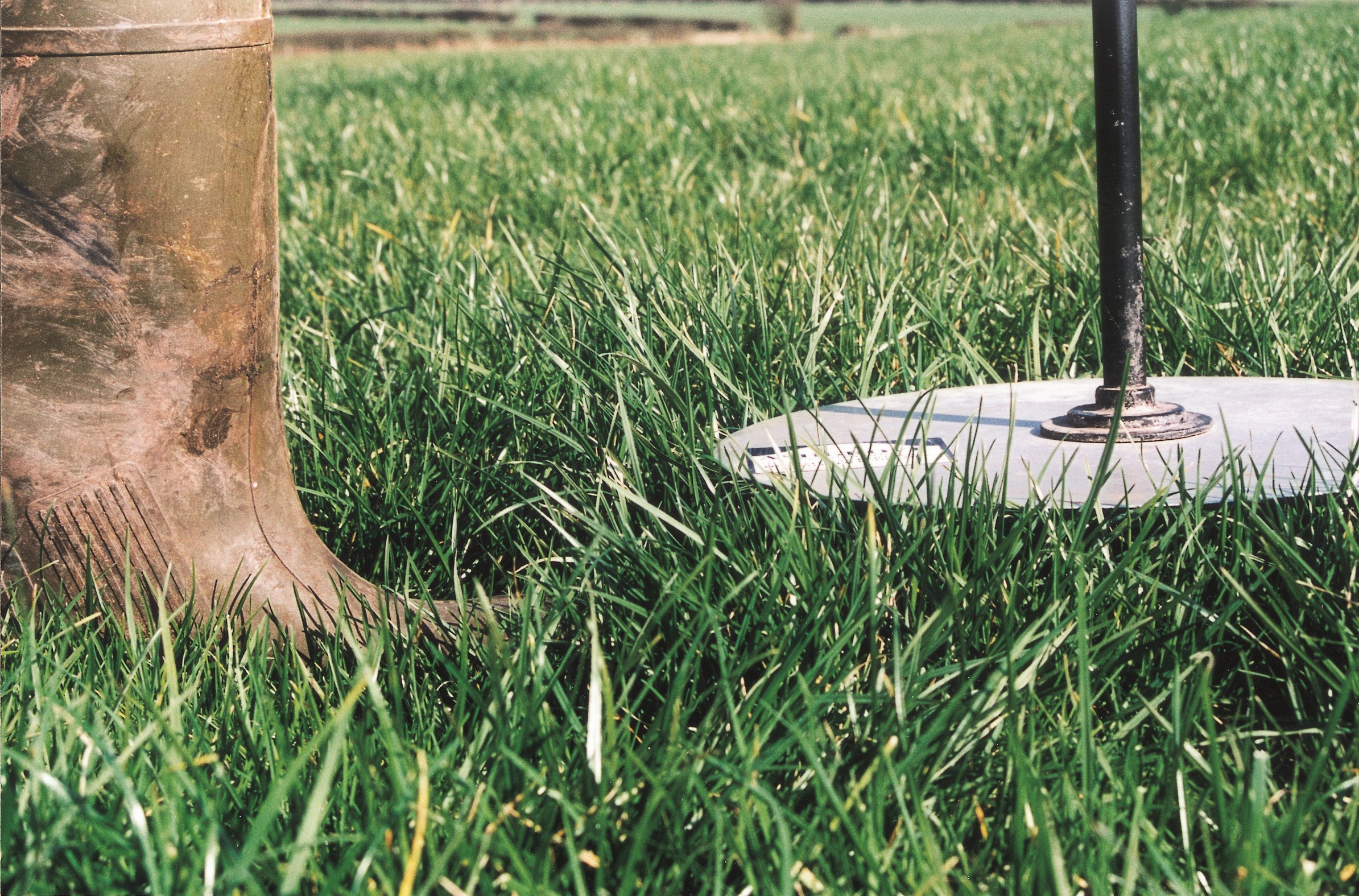
Plate meters can be mechanical or electronic but work in a similar way, measuring both the height and density of the sward. The user walks a ‘W’ pattern, taking 30–50 readings (or ‘plonks’) per paddock. Some plate meters give compressed height (cm), whereas others can convert to kg DM/ha for each paddock with the option of uploading data onto a computer via a USB stick. Technique is very important; inaccuracy can lead to pasture covers varying by up to 600 kg DM/ha.
Measurements of compressed height (cm) are converted into kg DM/ha using a calibration equation.
The method generally used in the UK is: compressed sward height (cm) X 125 + 640.
Other exist and to improve accuracy the equation needs to be changed for different grass types (e.g. new reseeds vs perm. pasture).
The electronic plate meter provides an accurate and convenient way to measure and assess field covers, measuring height and density of the sward. The average height of the paddock is measured in compressed centimetres and then converted into kilos of dry matter via an equation. The method generally used in the UK is height of sward (cm) x 125 + 640.
Example
Average rising plate meter reading of a field measures 6.68.
6.68 x 125 + 640 = 1475.
Cover = 1475 kg of dry matter per hectare.
This equation is automatically completed on the electronic plate meter.
Four steps to accurately assess cover across the field:
- Turn the plate meter on. The calculations 125 + 640 should flash up. Press the reset button on the plate meter.
- Take at least 30 readings across the field, walking in a W pattern, and include all the different patches of growth to get a representative sample of the sward.
- Record the final reading on the plate meter.
- Press the reset button and start in the next field.
Tip: the meter should always be placed vertically as the plate needs to be parallel to the ground for the most accurate reading.
How it works
Most models have a sliding central plate which rotates a counter to provide the height measurement. Having placed the probe on the ground, the plate is slid down the stem and positioned on the grass surface, compressing the sward a little. It is the plate moving down the central probe that causes the counter to register readings.
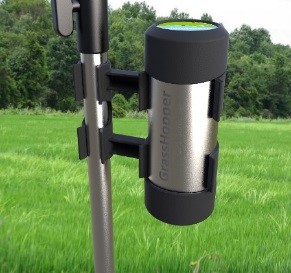
The Grasshopper is an ultrasonic sensor that measures compressed grass height and converts to grass volume by paddock. The sensor is used in conjunction with a conventional plate meter or the Grasshopper plate meter and uses cloud technology to send data to online databases. The sensor uses GPS linked to existing farm maps to identify individual paddocks and data can be exported to Microsoft Excel or other grassland management software.
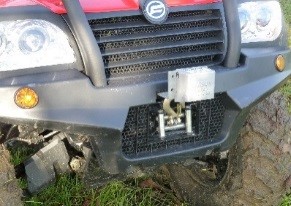
Ultrasonic measuring devices are available that can be attached to an ATV to allow rapid measurement of grass fields. Examples include the Automatic Pasture Reader (from Australia), which is mounted on the front of an ATV, and the C-Dax pasture meter from NZ that is trailed behind. These machines measure grass height using ultrasonic sensors and convert to kg DM/ha. A range of products are available that offer an increasing amount of functionality and complexity, including GPS, ability to save paddock data and wireless communication.
Accurate calibration of mounted devices is important as anything that affects the height of the sensor (such as tyre inflation or the weight of the operator) can affect the results.
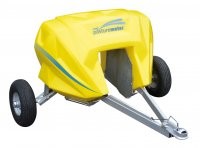
Case study: Andrew Crow
Find out how Andrew budgeted for extra feed during a drought, 2–3 weeks earlier than other farmers.
Andrew Crow from Cherrington Manor has been using a plate metre weekly during the last three grazing seasons as part of our Grazing Beef project. He has been inputting the data into grassland software program AgriNet.
The software has produced a grass wedge, which has allowed Andrew to manage his grassland and make key decisions such as when to take paddocks out for cutting (see graph below) and when there is a need to feed extra silage or concentrates during a period of slow growth.
The line on the wedge graph below is drawn from the ideal pre-grazing yield to the target post-grazing residual. If average covers are below the blue line there is a deficit and if average covers are above the line there is a surplus.
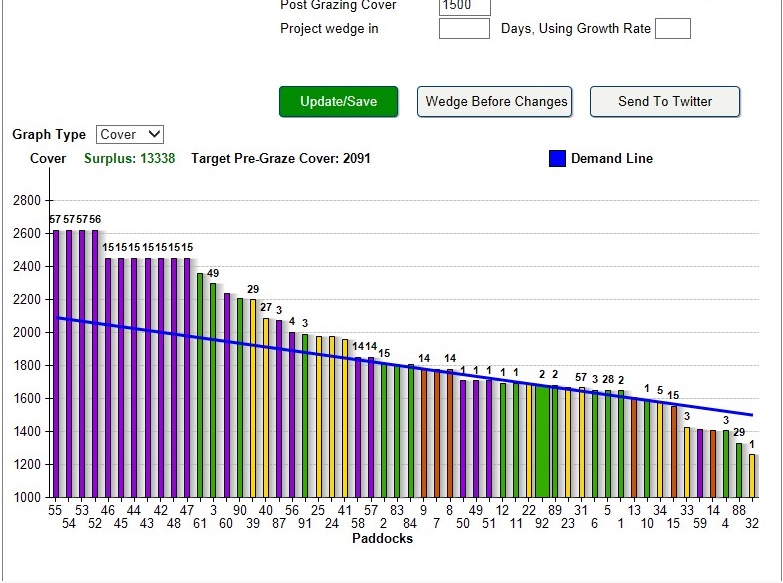 A perfect wedge is one where all of the paddocks are meeting the line – there are no surpluses (paddocks above the line) and no deficits (paddocks below the line), everything is on target.
A perfect wedge is one where all of the paddocks are meeting the line – there are no surpluses (paddocks above the line) and no deficits (paddocks below the line), everything is on target.
However, frequently this is not the case and, therefore, management is required.
Source of graph: Agrinet
Andrew found that the software and plate metering were invaluable during the summer of 2018 as it allowed him to see the grass deficit 2–3 weeks earlier than other farmers. It allowed him to budget how much extra feed he needed to slow the rotation down.
The data collected has allowed Andrew to make reseeding decisions based on the annual yield of paddocks. With poor annual growth indicating that the paddock should be reseeded.
Next in this series: Calculating dry matter intakes for grazing cattle

